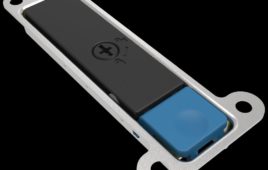T-Mobile is seeking to block Verizon from bidding on reserve spectrum in 12 markets based on the argument that the carrier’s population-weighted spectrum holdings exceed the FCC’s reserve eligibility limit.
In a Monday filing with the FCC, T-Mobile said Verizon was “incorrectly identified” as reserve eligible in a dozen markets across the country, including locations in Oklahoma, Massachusetts, Montana, Texas, Illinois, South Dakota, New Mexico, Wyoming, North Dakota, Utah and Nebraska. In all the markets cited in the filing, T-Mobile said Verizon holds in excess of one third of the population-weighted low-band spectrum holdings.
The FCC has previously determined that transactions that would result in an operator holding a third or more of available spectrum in a given market will be subject to “a more detailed, case-by-case, competitive review” to ensure a pro-competitive bidding process.
“Confirming the accuracy of the reserve-eligibility list will help achieve the important public interest goal of protecting against excessive concentration of low-band spectrum holdings by the nation’s dominant wireless providers while ensuring competitive bidding,” T-Mobile Counsel Trey Hanbury wrote in the Monday filing.
The filing comes in response to the FCC’s October publication of a reserve eligibility list for top tier providers that details where in the 416 Partial Economic Areas (PEAs) each of the four major carriers can bid on reserve spectrum. The document lists Verizon as eligible in the least number of markets – in 112 PEAs – while T-Mobile and Sprint, which has announced plans to sit out the proceedings, are reserve eligible in all PEA markets. AT&T falls in the middle with reserve eligibility in 242 PEA markets.
Monday’s filing underscores T-Mobile’s determination to wage a fierce battle for spectrum in the upcoming auction. Over the past several months, T-Mobile executives have repeatedly expressed the sentiment that the Un-Carrier will use the auction as an opportunity to “buy anything that’s humanly possible within our envelope.”
“TMobile is definitely ready and participating and sees this auction as a unique, important opportunity and event,” T-Mobile CEO John Legere said on Twitter in September. “TMobile is going to go hard in this low-band spectrum auction and put that spectrum to good use for our customers!”
Reports have indicated that T-Mobile is looking to raise nearly $10 billion for use in the auction, and the Un-carrier has certainly been working toward that figure in recent days. At the start of November, T-Mobile announced a $2 billion debt sale that was intended to raise funds for “general corporate purposes, which may include acquisition of additional spectrum.” On Monday, the Un-Carrier also closed a deal to sell 600 of its towers to Phoenix Tower International. Though financial details of the transaction were not immediately released, the move closely mimicked deals cut by AT&T and Verizon to raise billions ahead of the AWS-3 auction.
T-Mobile’s aggressive stance may stem from the fact that the existence and size of the spectrum is not certain. Though the FCC has said it will set aside up to 30 MHz of spectrum for smaller carriers, Hanbury explained at an October conference that the reserve is a “market-based” product contingent on several conditions.
According to Hanbury’s October presentation, the reserve’s existence and size will depend on whether potential revenue from the auction exceeds the prices broadcasters are demanding as well as demand expressed by reserve bidders. Once the reserve is triggered, he said, its size may range from 10 MHz to 30MHz, depending on what band plan the FCC lands on for the overall auction.
“It’s not as if the FCC will start the auction with the reserve in place,” Hanbury said at the time. “They will not. Everyone’s going to be in a common pool of demand and you’ll be competing head to head with Verizon and AT&T. But once we have the reserve triggered…Verizon and AT&T, if their low band spectrum holdings exceed one third of the low band available, will have to relocate their demand from the reserve blocks to the non-reserve blocks. ”
Still, it appears T-Mobile isn’t willing to take any chances and is trying to weed out as much competition ahead of time as it can, stating in Monday’s filing that it or other parties “may yet identify additional corrections to the FCC’s reserve-eligibility list.”
Filed Under: Telecommunications (spectrums)




